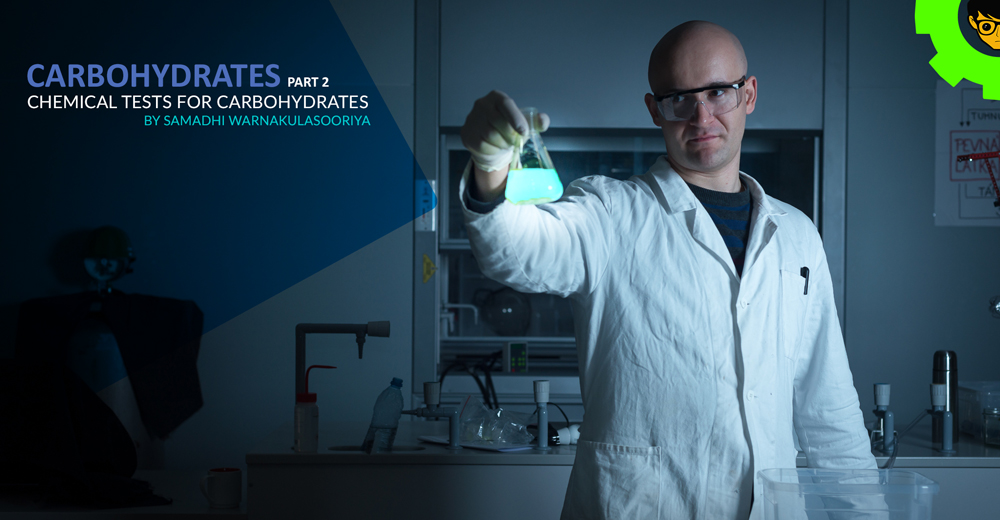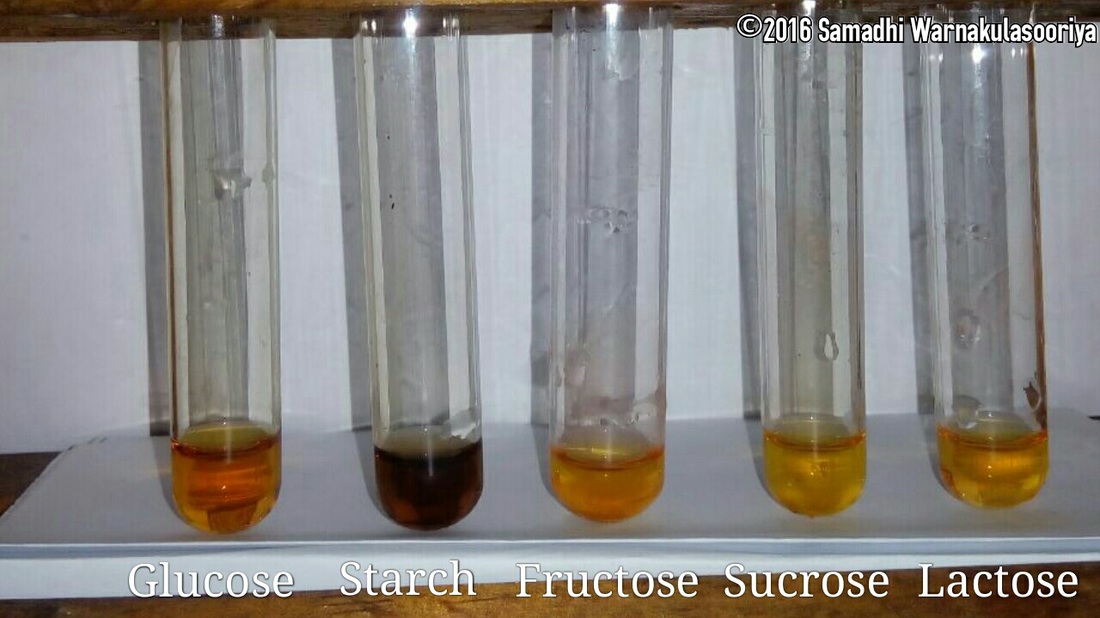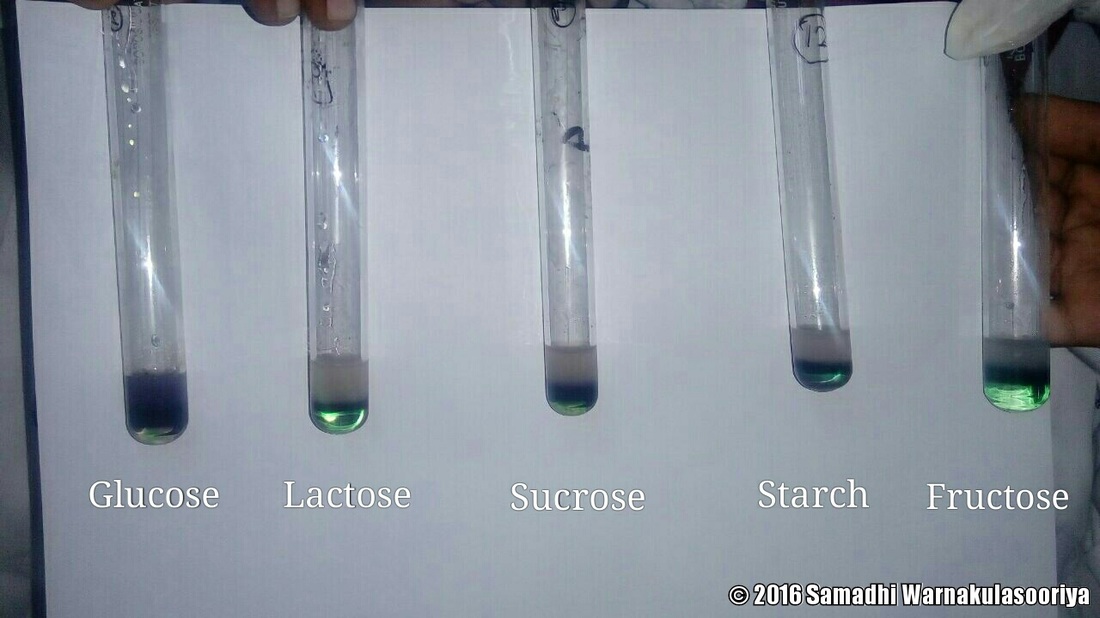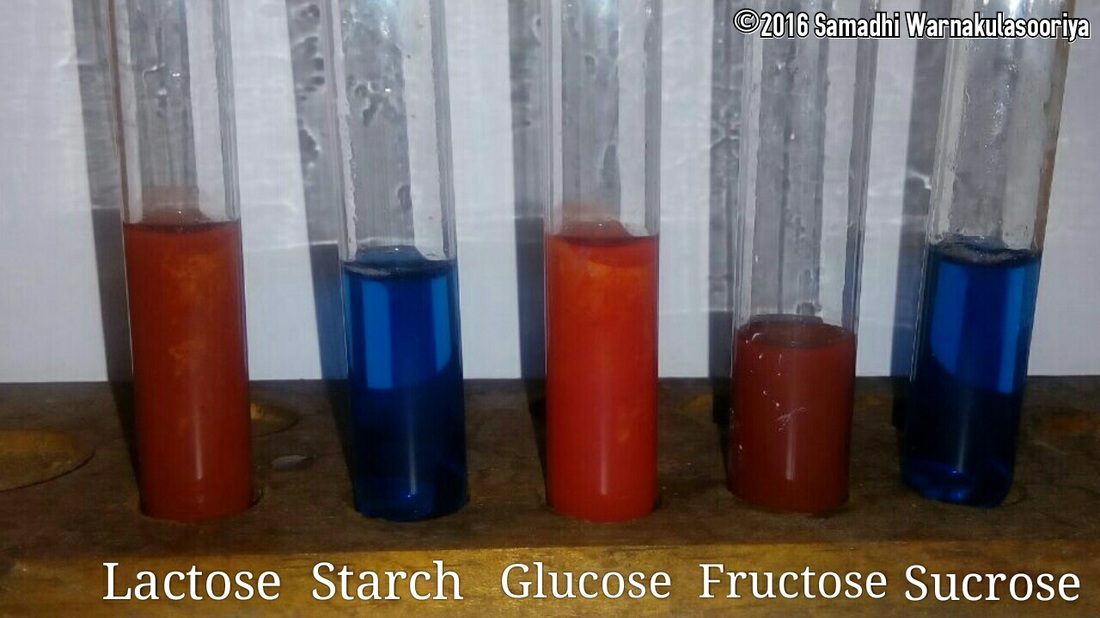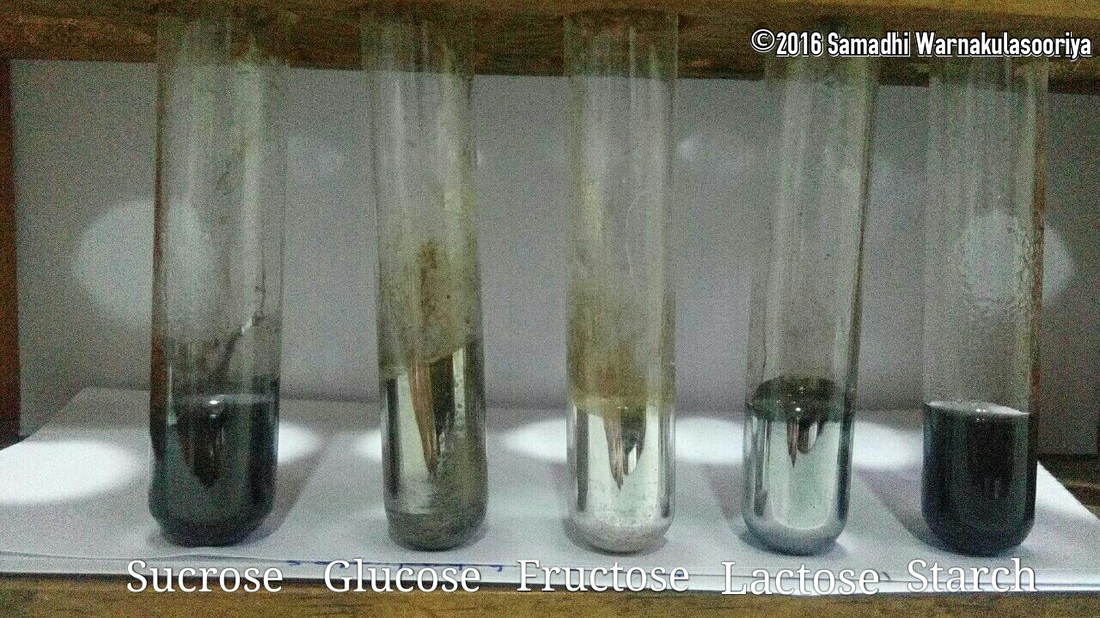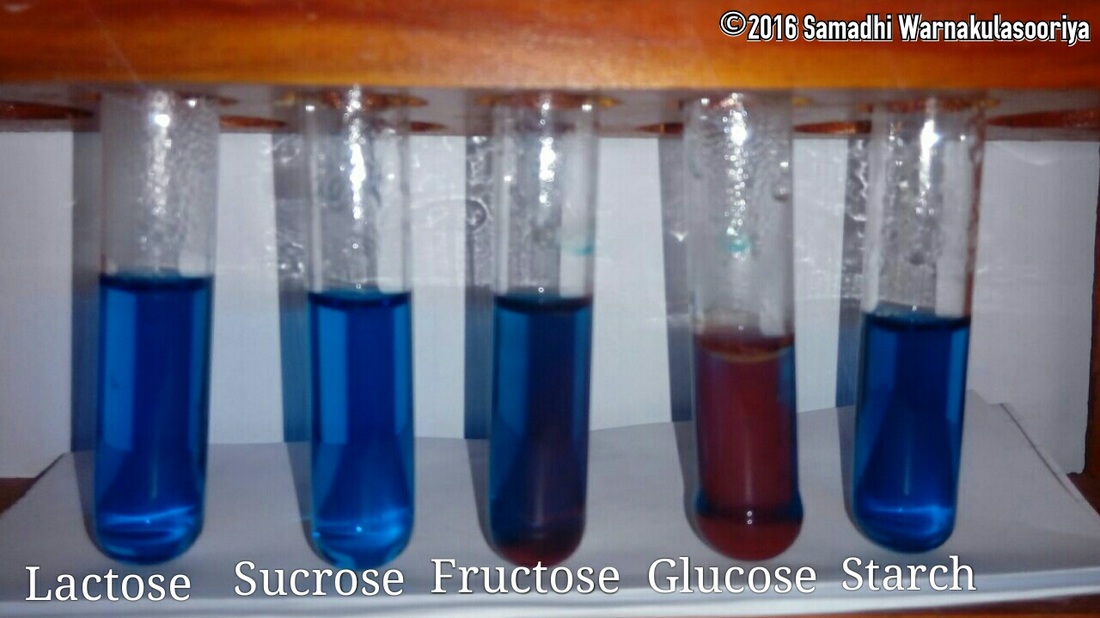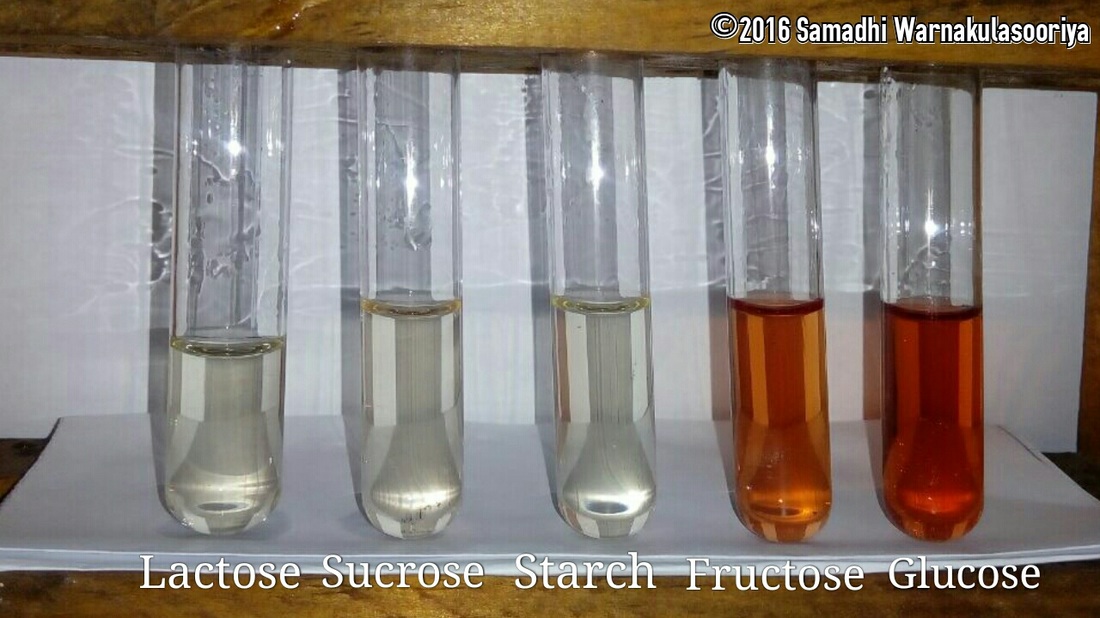Carbohydrate samples used:
- Glucose Sample
- Fructose Sample
- Sucrose Sample
- Lactose Sample
- Starch Sample
1. Iodine Test
Materials :
- Carbohydrate Samples (1 ml from each carbohydrate sample)
- Iodine solution (3 drops)
Methodology :
1 ml of each Carbohydrate sample was taken to 5 test tubes respectively. Then 3 drops of Iodine solution was added to each test tube.
Basis of the test :
This test is to identify branched macro molecules. Unbranched macro molecules will give a blue colour whereas Branched macro molecules will give a reddish black colour (Figure 1).
2. Molisch’s Test
Materials :
- Carbohydrate Samples (1 ml from each carbohydrate sample)
- Molisch’s Reagent (Few drops)
- Conc.H2SO4 (1-2 ml)
Methodology :
Few drops of Molisch’s reagent were added to 1 ml of each carbohydrate sample and the samples were mixed. Then 1-2 ml of Conc.H2SO4 was added carefully along the test tube walls.
Basis of the test :
This is the general test to identify carbohydrates. Formation of a purple ring at the interface indicates positive result. Usually all the carbohydrates (monosaccharides, disaccharides and polysaccharides) give positive result to this test (Figure 2).
3. Benedict’s test
Materials:
- Carbohydrate Samples (1 ml from each carbohydrate sample)
- Benedict’s solution (5 ml)
Methodology :
1 ml of Carbohydrate samples were taken respectively to the boiling tubes. Then 5 ml of Benedict’s solution was added to each tube with the samples. There after the samples were heated for 2 minutes at 70 ° C.
Basis of the test :
This test confirms the presence of reducing sugars in the sample. All monosaccharides and some disaccharides such as lactose and maltose give positive results. Presence of an aldose group may help to give positive results. Although fructose contains a ketose group it may give a positive result by converting it to glucose and mannose which are aldoses.
Benedict’s reagent contains Cu2+ which is reduced in to Cu+ and forms Cu2O which is a brick red precipitate (Figure 3).
4. Silver Mirror Test (Tollen’s Test)
Materials :
- Carbohydrate Samples (1 ml from each carbohydrate sample)
- AgNO3 (1 ml)
- NaOH
- NH4OH
Methodology :
1 ml of AgNO3 was added to 5 separate boiling tubes and then dilute NaOH was added to each tube until a slight precipitate could be seen. Then NH4OH was added to each tube. Finally Carbohydrate samples were added to each boiling tube separately and the tubes were heated for 5 minutes at 70 ° C.
Basis of the test :
This test confirms the presence of aldehyde or ketone group. With the presence of reducing sugars this test gives a silver mirror as in here Ag+ reduces to Ag (Figure 4).
5. Barfoed Test
Materials :
- Carbohydrate Samples (1 ml from each carbohydrate sample)
- Barfoed Reagent (5 ml)
Methodology :
1 ml of Carbohydrate solutions were taken into separate boiling tubes. There after 5 ml of Barfoed Reagent was added to each sample and the samples were heated for 3-4 minutes.
Basis of the test :
This test is used to detect monosaccharides and also disaccharides may give a positive result. A formation of red precipitate or definite red cloudiness can be observed (Figure 5).
6. Seliwanoff’s Reaction
Materials :
- Carbohydrate Samples (5-6 drops from each carbohydrate sample)
- Seliwanoff’s Reagent (5 ml)
Methodology :
5 ml of Seliwanoff’s reagent was taken to 5 separate boiling tubes and 5-6 drops of Carbohydrate samples were added to each tube. Then the samples were heated for 30 seconds.
Basis of the test :
This test is used to separate aldehydes and ketones. Ketoses are rapidly dehydrated than aldoses when heated (Figure 6).

